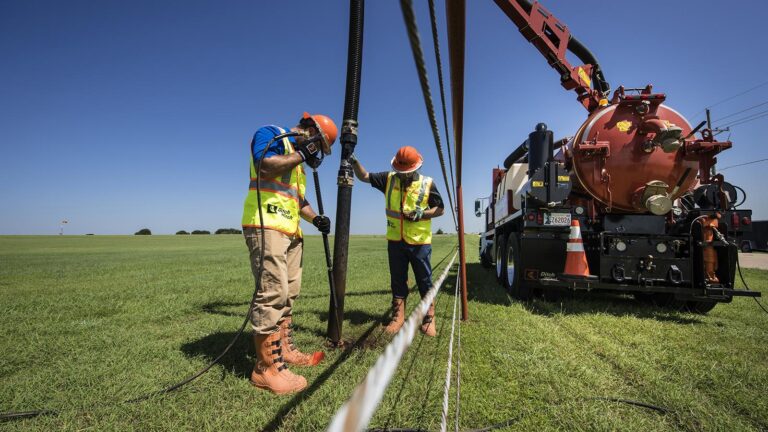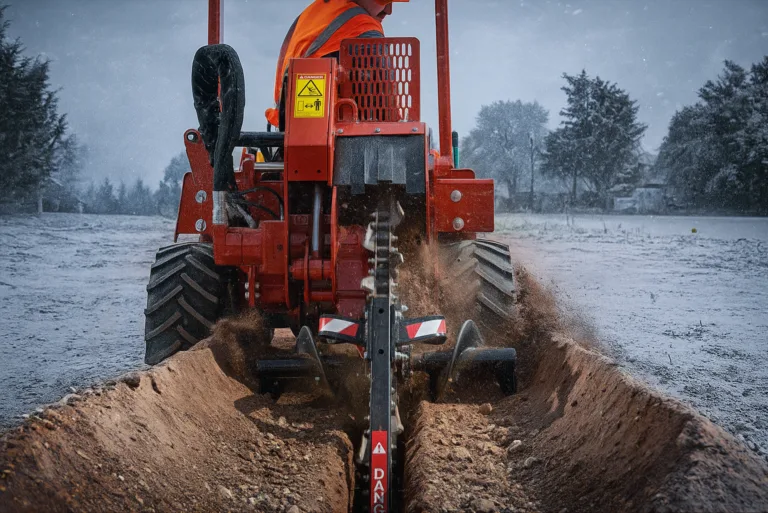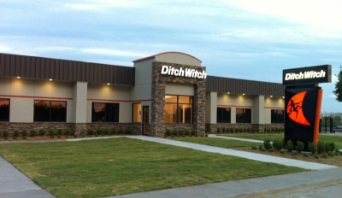3 Questions to Ask When Choosing a Trencher
From Green Industry Pros
By answering three key questions, contractors can select the right trencher for their landscaping jobsite.
Trenchers are a staple piece of equipment on landscaping jobsites. From digging and moving dirt to cutting through rock, contractors know that these machines allow them to install utilities and irrigation fixtures quickly and efficiently.
The most popular machines to cut a trench are walk-behind trenchers and stand-on skid-steers with a trencher attachment. With two different machines and an abundance of machine sizes, features and attachments, it can be overwhelming to know what trencher fits your jobsite best. By answering three key questions, landscapers can be sure to select the right trencher for their landscaping jobsite.
1. What Tasks Need to be Completed?
When choosing the right equipment, it’s important to identify what tasks need to be completed throughout the process. Does your project require versatility, or would a single-purpose machine get the job done? If the latter, consider using a walk-behind trencher. This single-purpose machine is built with the features and power needed to make a cut quickly and efficiently.
The walk-behind trencher’s dedicated chain, teeth and sprocket combination are specifically designed to work together to make trenching as efficient as possible. Additionally, the machine’s reliability minimizes unnecessary downtime to efficiently complete the installation of irrigation lines, water lines or pipes and move on to your next project.
To ensure jobsite success, it is also important to follow walk-behind trencher best practices. Go slow, never force a cut and let the machine do the work. Following these guidelines will increase efficiency by reducing machine wear and tear and minimizing downtime.
On the other hand, if you plan to use the machine to complete other tasks in addition to trenching, a stand-on skid-steer with a trencher attachment will be the right choice due to its versatility.
A stand-on skid-steer with a trencher attachment is an ideal fit for jobs that will have a range of tasks. With the ability to simply switch attachments through an automated latching system, users can efficiently jump from one project to the next. By using a trencher with a bucket, auger or fork, end users can benefit from the versatility these machines offer and handle countless tasks with ease. For example, if they need to install a sprinkler system, the stand-on skid-steer allows them to make the trench and then switch out attachments to relandscape once completed, eliminating the need for additional machines or personnel on the jobsite.
As a best practice when using a stand-on skid-steer, check that the plate is clean and the pins holding the attachment are engaged. This reduces the risk of the attachment falling off while in motion and unnecessary downtime.
2. What are the Project’s Requirements?
When choosing between a walk-behind trencher or a stand-on skid-steer with a trencher attachment, it is important to understand the project requirements. A great place to start is by evaluating how deep the product will need to be installed. For example, if the product needs to be installed up to 250 feet long, 2 to 4 feet deep and up to 8 inches wide, a walk-behind trencher will do the trick. However, if the trench needs to be longer, deeper or wider, a stand-on skid-steer with a trencher attachment will be needed.
Identify how much power is needed on the jobsite. A walk-behind trencher provides up to 30 hp and is a cost-effective solution to help you complete many landscaping trenches, while a stand-on skid-steer provides up to 59 hp, allowing for increased trenching speed and better cycle times.
3. What are the Jobsite’s Constraints?
Keep in mind the jobsite, as each has a mix of different conditions and constraints. For example, if contractors are working in space-restricted areas like residential backyards with fences, they may need to consider machine size above other characteristics. In this case, a walk-behind trencher will help them easily maneuver through fences or around sheds, gardens and other structures.
In contrast, if there are fewer space constraints, they will be able to select a larger machine that has more power. A stand-on skid-steer offers maximum power and lifting capacity to help move heavy material on and off the jobsite more effectively. Additionally, its increased maneuverability and visibility provide an unobstructed view, helping boost productivity when working in residential areas where obstacle avoidance is necessary.
Talk to the Equipment Experts
Once you have answered these three questions and have an idea of which trencher is best for your landscaping jobsite, make sure to talk to your local equipment dealer or rental yard. They are a great resource that can help you select the right trenching equipment to ensure jobsite success.





